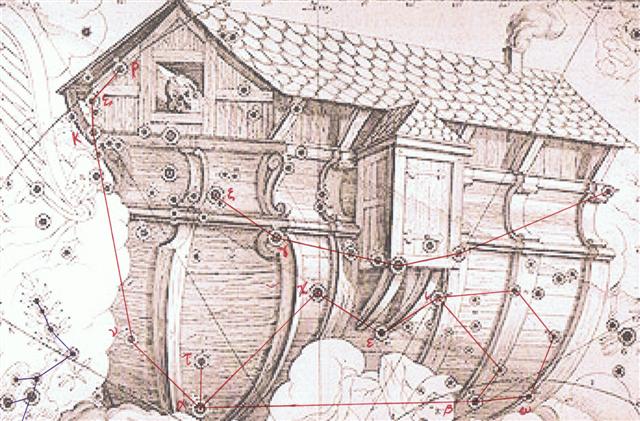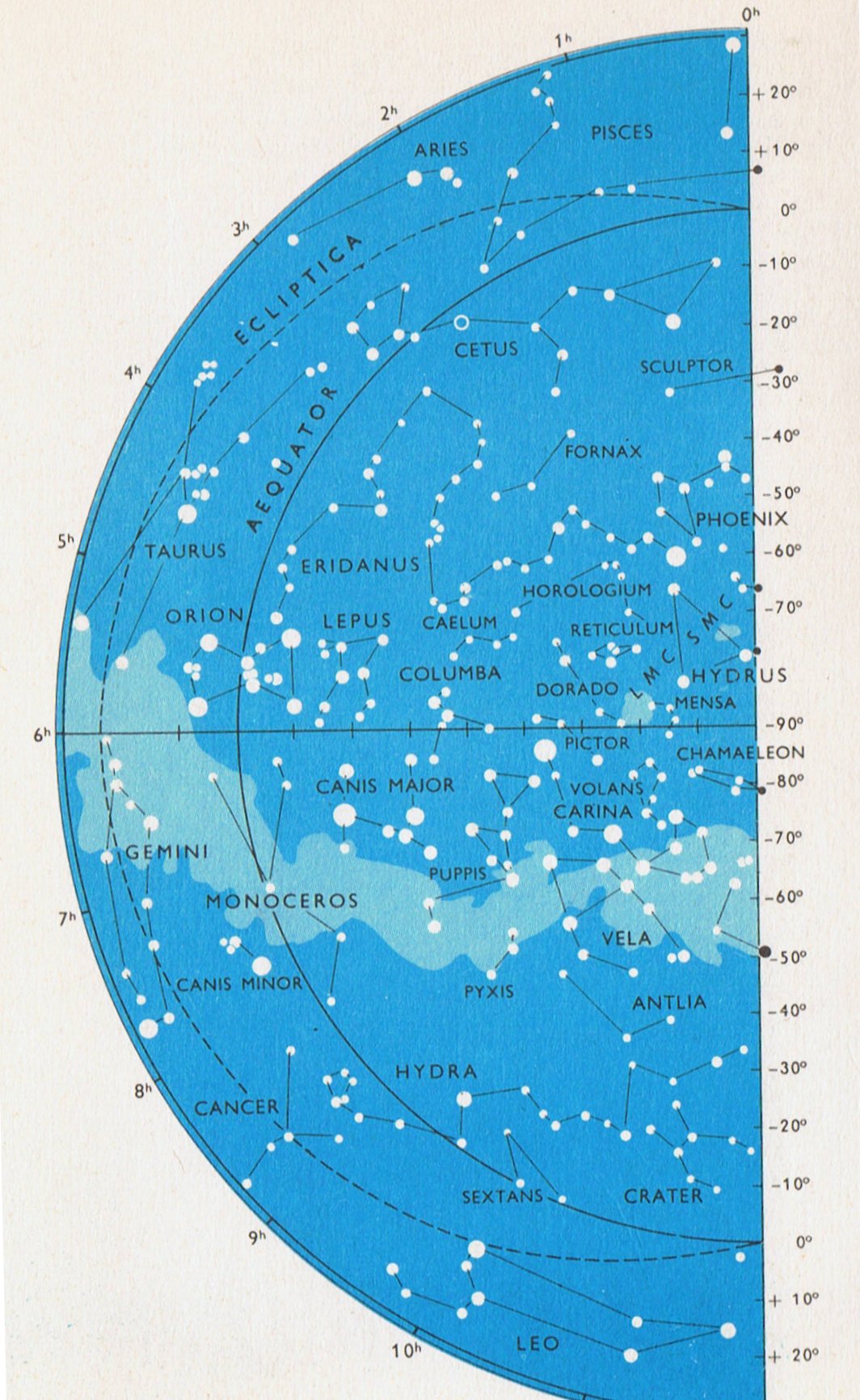Leaving the last star of Columba (δ) behind
we should then, by following the path of time, reach 'the Ark of Noah' (Argo Navis):
In rongorongo times Sun reached the greatest star of the Ship (α, Canopus, -0.72) when in the night sky the day was number 360 according to the Gregorian calendar. But 2 days later, in the night of June 27 (day 177 + 1) the blazing Vega (0.03) dominated the sight. I suggest the powerful front wing of manu rere in Cb4-1 refers to Vega:
I have already earlier noted this possibility, viz. that Vega was drawn with an extraordinary powerful 'limb':
There is also manu rere in June 17 (168) to consider, when Sun was at Betelgeuze and Etamin (γ, marking the southern head of Draco) ruled the night side:
From June 17 (168) to June 25 (176) there are 8 days, and from glyph 354 + 100 to glyph 364 + 100 there are also 8 days:
Possibly manu rere with a starry 'eye hole' (in Cb3-13) and with an ejected loose bow-string in front represented the old solar year ending at Betelgeuze, which in rongorongo times was 4 days before 6h but originally perhaps around the March equinox:
The twin manu rere figures could then represent some later stage of the development, possibly the pair of half-years ahead. Cb4-1 (with Vega) seems to be the beginning of a new cycle and we can see how the left wing resembles the left wing of manu rere in Cb3-13 (454). The mysterious term taketake reappears with the manu rere twins:
I think we can compare the C calendar text for the end of June with how 40 days earlier - and according to G - the Pleiades birds may have announced the beginning of a new manzil year:
In an effort to come further with the word taketake I used Wikipedia and indeed found answers. There is an extinct species of pigeon which once (in the miocene) was living in New Zealand with the scientific name Rupephaps taketake, where rupe is the Polynesian word for pigeon. The difference between a pigeon and a dove (Columba) is minimal. Another name for this species of bird is Saint Bathans Pigeon. Searching back in time for the reason of this name I found: "Baithéne mac Brénaind (or Saint Baithen) was an Irish monk, specially selected by Saint Columba as one of the band of missionaries who set sail for what is now Scotland in 563." Here the story is upside down, it was not the dove (St Columba) who was sent out to search for the new land but St Baithen, he was the searching bird. However, eventually myth corrected the mistake and made him a pigeon. The extinct type of bird was not found and described until in the year 2008. Taketake means ancient: "The specific epithet 'taketake' is Māori for 'long established', 'ancient' or 'original', referring to the age of the fossil specimen." Metoro may have tried to convey the idea that the stars now in June once upon a time (taketake) were at the place which today is occupied by the Pleiades birds ('doves'). Counting backwards from Phakt (α Columbae) to Atlas (27 Tauri) means moving back in time around 71 * (84.7 - 56.3) = ca 2016 years before 1870 A.D. The manzil Albatain was ruled by the star 'Albatain in the Pleiades', which could refer to Atlas. The culmination date of Atlas (in rongorongo times) was December 31. I would not be suprised if the name Al-batain refers to St Bathan. At the beginning of the age of Pisces the Pleiades would have risen with the Sun around 84.7 - 56.3) = 28 days earlier than in 1870. This, I suggest, could explain why there is a distance of 28 days from May 16 (136) - the day before the first manzil day Sheratan 1 - to the manzil day Albatain 1 (June 13, 164). I will now update my Polynesian word list item for take:
| ||||||||||||||||||||||||||||||||||||||||||||||||||||||||||||||||||||||||||||||||||||||||||||||||||||||||||||||||||||||||||||||||||||||||||||||||||||||||||||||||||||||||||||||||||||||||||||||||||||||||||||||||||||||||||||||||||||||||||||||||||||||||||























